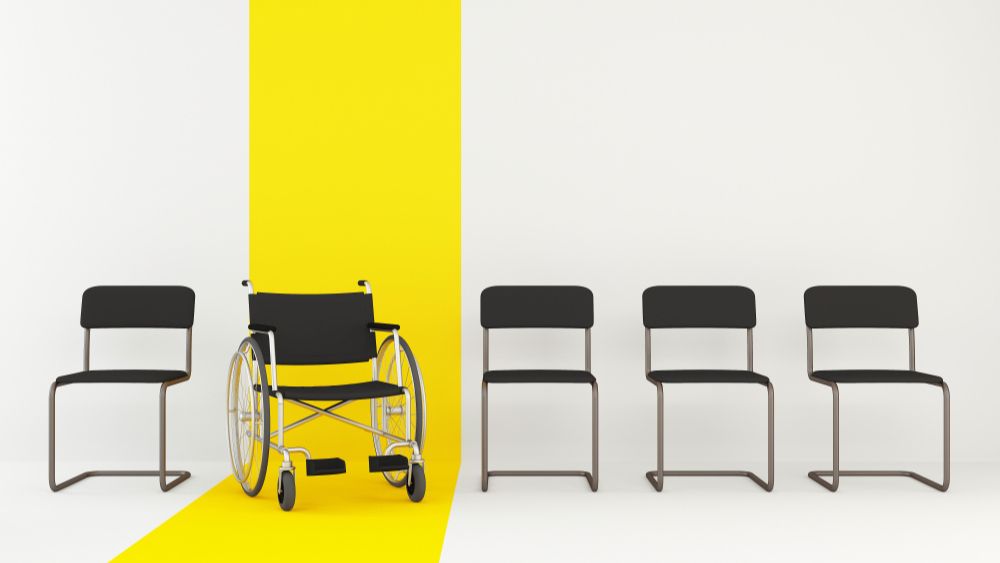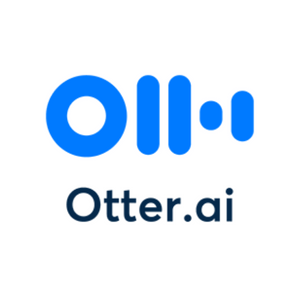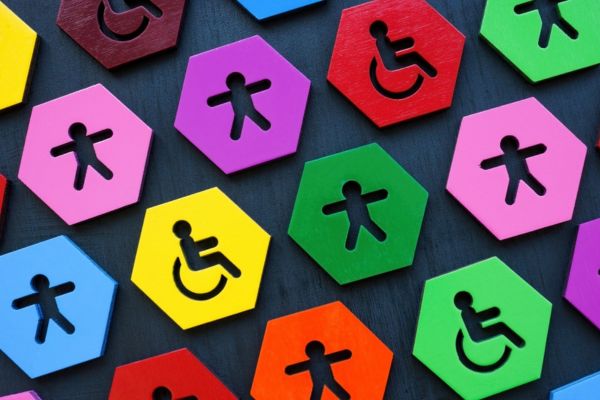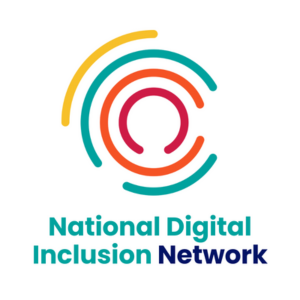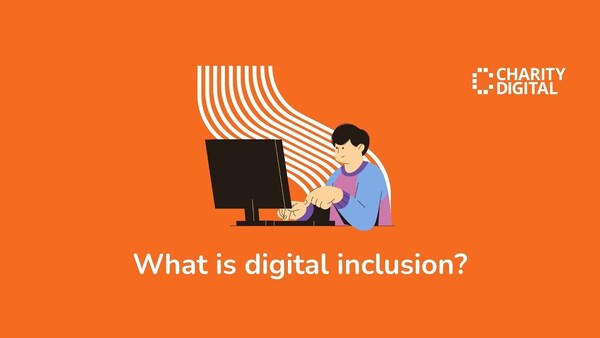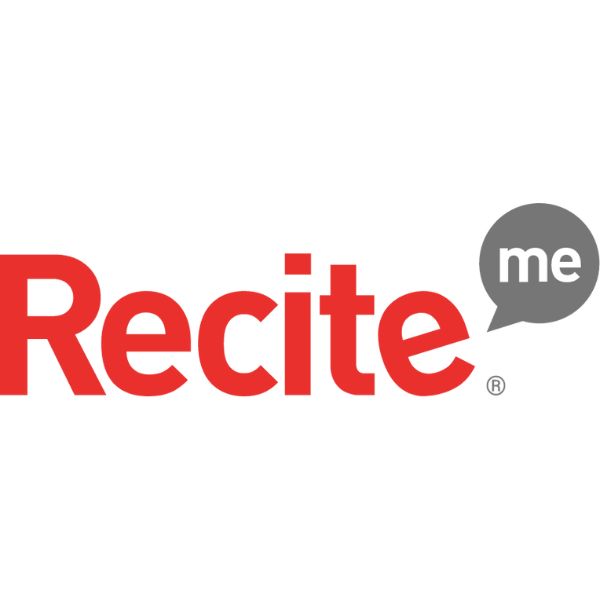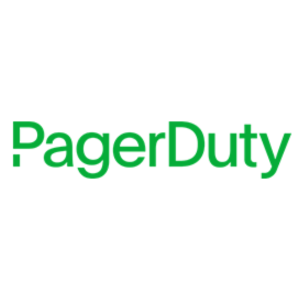Insights
INSIGHTS
All Topics
My Account
How to make your workplace accessible
23 May 2024by Kellie Smith
We look at how you can support staff with disabilities to excel in their jobs and play an active role in the workplace
Click to listen to the articleplay_arrow04:37
Everyone has the right to get a job and make a living, but that’s not happening for everyone. Statistics show that people with disabilities are almost twice as likely to be unemployed as people without disabilities. So, there is lots more employers can do to make the workplace accessible.
You may have read our article on supporting people with disabilities in the workplace. It explores how you can help people through the recruitment process and as employees, as well as your legal obligations as an employer. This article covers the adjustments you can make to your workplace and the tools you can use to support people with disabilities.
Defining accessibility
ACAS says accessibility is “about removing barriers to make sure people with disabilities can take an active part in working life”.
Accessibility is about the physical workplace and ensuring everyone can get into the building and move around it. But it’s also important to think about how people can do their jobs effectively when they’re working remotely. This is especially important after the pandemic as more people are working from home.
So, accessibility goes much deeper. It means making sure people can access the tools, systems, and technology they need to do their jobs when they’re in the office or at home. For example, being able to access shared folders with work documents.
You also need to make sure that information you share with staff is presented in an accessible way. For example, information you use in training courses and staff inductions.
Processes that are carried out in the workplace, such as staff consultations, also need to be accessible so everyone can take part.
Why accessibility is important
ACAS says that making your workplace accessible encourages people to adopt inclusive behaviour. This prevents discrimination as everyone’s needs are met.
There’s a guide for focusing on accessibility. It will make your workforce more diverse, which will increase productivity, morale, collaboration, and critical thinking. It will also show people that your charity is committed to equality, which may help to increase the support you get and encourage donations.
Making your workplace accessible
Workplace accessibility isn’t just about installing lifts and ramps, or having an accessible toilet. There is a lot more that employers can do to tackle accessibility issues.
Inclusive Employers has a practical guide which shows you how to do this. It includes information on adapting your workplace and the working environment, the specialist equipment you may need, and training staff.
Examples of how to make your workplace accessible include: creating parking spaces near to the entrance and exits of a building, to support people with limited mobility, and putting braille on doors and signage for people with visual impairments, as well as having braille on buttons in lifts.
Supporting people with hearing impairments
Staff with hearing impairments need support in the workplace. For example, they may benefit from assistive technology, like a hearing loop in meeting rooms. This will help people with hearing aids to understand what people are saying over background noise.
Other assistive tools that can help people with hearing impairments include amplified telephones and a Roger Pen. The Roger Pen is a microphone that helps people hear and understand more when there is loud noise.
You could also make improvements to your working environment, such as the acoustics. For example, you could put carpet in, use soft furnishings, and fit rubber caps on chair and table legs.
Supporting people with visual impairments
There are different adjustments that can be made to support people with visual impairments. These include providing tools, like screen magnification, screen reading, and dictation software. People with visual impairments may also benefit from a high visibility keyboard, braille devices, and adjustments to display screen settings.
Supporting people with mobility issues
There are a number of ways to make an office more accessible for people in wheelchairs or those who use another type of mobility aid. This includes making sure people have a personal emergency evacuation plan that is carried out in an emergency situation. You may also need to adapt the working environment, such as making sure someone in a wheelchair can get to their desk without asking others to move.
Supporting people with mental health conditions
Not all disabilities are visible. Some mental health conditions are considered a disability by law. Employers should treat mental health conditions with the same care as a physical disability. It’s important to create a workplace culture where people can openly talk about mental health. For example, you could train staff to become mental health champions.
Financial support to pay for adjustments
It’s important to know your responsibilities as an employer. The Equality Act 2010 says that employers must make reasonable adjustments for people with disabilities.
If someone’s needs go beyond what is considered reasonable adjustments, the government programme Access to Work may help. It gives financial and practical support for people with disabilities in the workplace. It could pay for things like specialist equipment and assistive software, a BSL interpreter and adaptions to a vehicle to get to work.
Find out more
Our 2024 Digital Inclusion Summit revealed how charities can help can make the digital world a safer, happier, more inclusive place, from improving access to digital devices to demystifying cyber security. Click here to watch the session recordings for free.
Our report, ‘Digital inclusion in the UK charity sector’, uncovers charity practitioners’ attitudes towards digital inclusion, including the challenges charities face in reaching out to service users and how they are making the most of the digital technology they use. Click the link in the orange box below to download the report.
Our Digital Inclusion Hub features regular articles, podcasts, and webinars to help charities reach across the digital divide. Click here to learn more.
More on this topic
Recommended Products
Featured Products
Related Videos
Our Events
Charity Digital Academy
Our courses aim, in just three hours, to enhance soft skills and hard skills, boost your knowledge of finance and artificial intelligence, and supercharge your digital capabilities. Check out some of the incredible options by clicking here.

